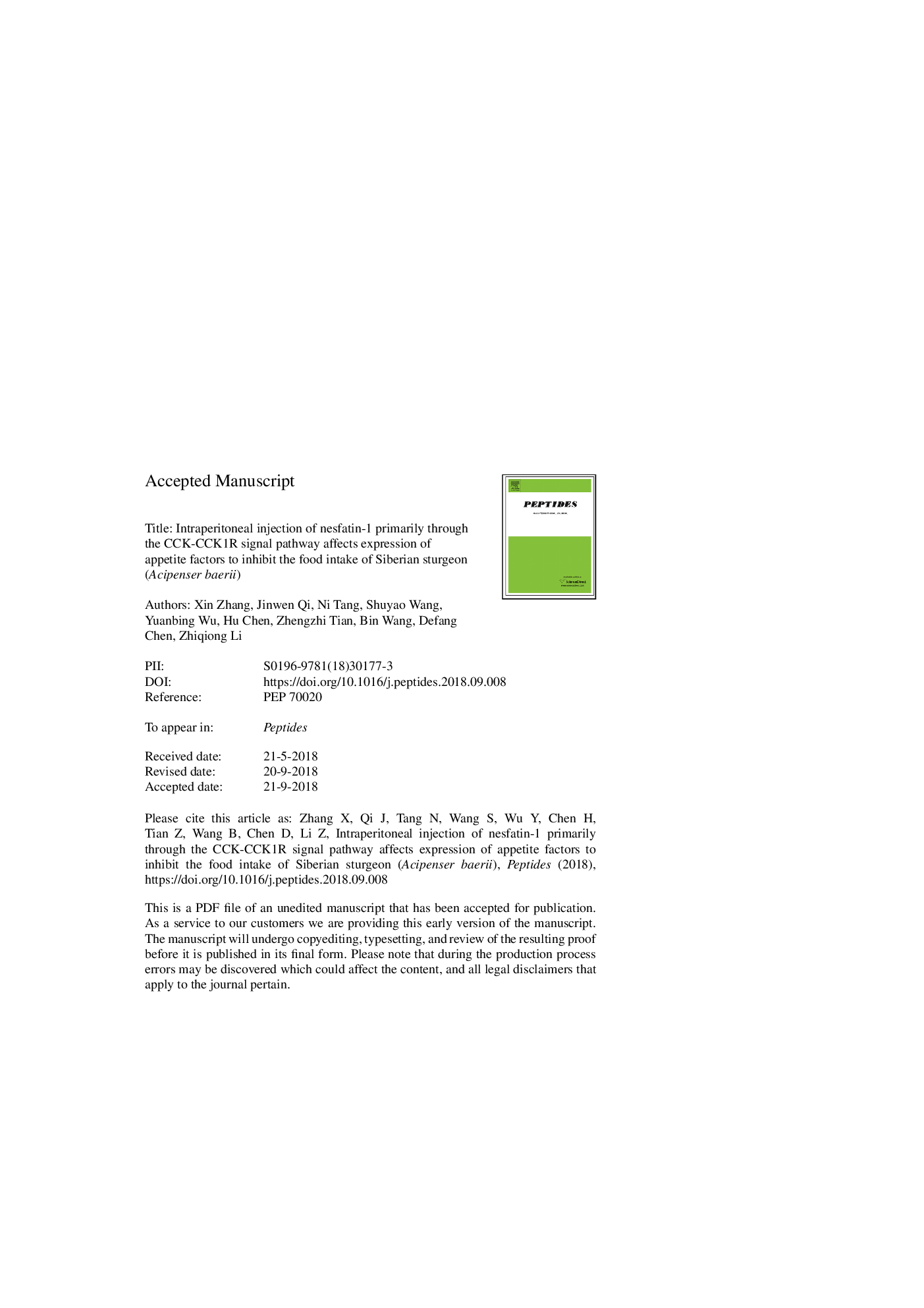| Article ID | Journal | Published Year | Pages | File Type |
|---|---|---|---|---|
| 11015484 | Peptides | 2018 | 29 Pages |
Abstract
Nesfatin-1 is an 82-amino acid protein derived from nucleobindin 2 (NUCB2), which could inhibit food intake in fish and mammals. However, the neuroendocrine mechanism of nesfatin-1 in animal appetite regulation is unclear. To explore the feeding mechanism of nesfatin-1 in Siberian sturgeon (Acipenser baerii), intraperitoneal injections of nesfatin-1 and sulfated cholecystokinin octapeptide (CCK8), Lorglumide (CCK1R selective antagonist), or LY 225,910 (CCK2R selective antagonist) were performed. Co-injection of nesfatin-1 and CCK8 synergistically significantly decreased the food intake in 1âh. Lorglumide reversed the anorectic effect of nesfatin-1, but LY 225,910 had no effect. Moreover, Lorglumide could also reverse the expressions of appetite factors including nucb2, cck, unc3, cart, apelin, pyy, and npy induced by nesfatin-1 in the brain, stomach, and liver, while LY 225,910 partially reversed these changes. These results indicate that nesfatin-1 inhibits the appetite of Siberian sturgeon mainly through the CCKâCCK1R signaling pathway.
Keywords
UCN3CCK8PYYCCK2RNUCB2nucleobindin 2CARTUrocortin-3NUCB2/nesfatin-1CCKMS-222Sulfated cholecystokinin octapeptideCRFi.p.NPYCCK1RqPCRtricaine methane sulfonateintraperitonealFeeding behaviorcorticotropin releasing factorSiberian sturgeonAppetite regulationquantitative real-time PCRbody weightpeptide YYcholecystokinincocaine and amphetamine regulated transcriptNeuropeptide Y
Related Topics
Life Sciences
Biochemistry, Genetics and Molecular Biology
Biochemistry
Authors
Xin Zhang, Jinwen Qi, Ni Tang, Shuyao Wang, Yuanbing Wu, Hu Chen, Zhengzhi Tian, Bin Wang, Defang Chen, Zhiqiong Li,
